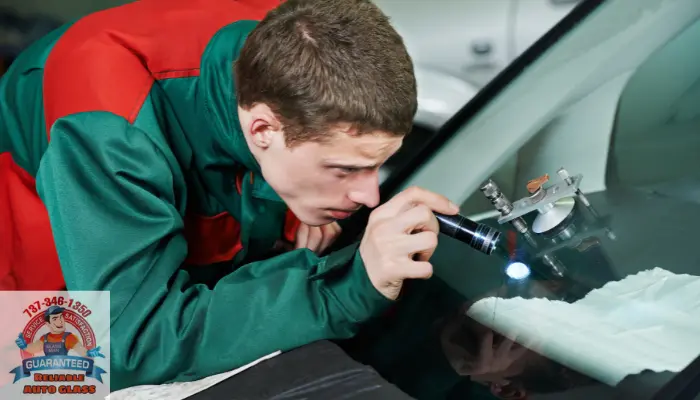How Long Does It Take To Fix A Car Window

So, you've got a shattered window. Not ideal, but hey, it happens. Maybe a rogue rock, a disgruntled pigeon (yes, it happens!), or, dare we say it, something more nefarious. The immediate question buzzing in your gearhead brain isn’t, "How much will this cost?", but "How long will I be sidelined?" The answer, predictably, is a bit more nuanced than a simple yes or no. Let's dive into the murky world of car window repair timelines, considering different vehicles, technologies, and repair options.
Factors Affecting Repair Time: A Breakdown
Several factors come into play when determining how long it will take to fix your car window. It's not just about slapping in a new piece of glass; preparation, part availability, and the complexity of the window's integration with other systems are crucial. Here's a look:
- Vehicle Model & Year: This is a big one. A classic 1967 Mustang with a simple, manually operated window will be a drastically different beast than a 2024 Tesla Model X with auto-tinting, rain sensors, and intricate wiring.
- Window Type: Are we talking about a simple door window, a more complex rear window with defrosting elements, or a panoramic sunroof? The more intricate the window, the longer the repair.
- Damage Extent: A small chip that can be repaired with resin is a quick fix. A shattered window requiring full replacement? Not so much.
- Parts Availability: Is the replacement glass readily available, or is it a special order? Rare or older models can significantly delay the process.
- Repair Shop: A busy shop may have a longer wait time, while a smaller, independent shop might be able to squeeze you in sooner. Experience and efficiency also play a major role.
Spec Table: Estimated Repair Times
Let’s get down to brass tacks. Here’s a table estimating repair times for various scenarios:
| Scenario | Estimated Time | Notes |
|---|---|---|
| Small Chip Repair | 30 minutes - 1 hour | Quick and easy; can often be done while you wait. |
| Door Window Replacement (Standard Model) | 1 - 3 hours | Includes removal of old glass, cleaning, installation of new glass, and testing. |
| Door Window Replacement (Advanced Features - Auto Tint, Sensors) | 2 - 4 hours | Additional time required for recalibration and ensuring proper functionality of advanced features. |
| Rear Window Replacement (Defroster Grid) | 2 - 4 hours | Careful attention required when dealing with defroster grid connections. |
| Sunroof Replacement | 4 - 8 hours | Complex process requiring specialized tools and expertise; proper sealing is crucial. |
Model-Specific Nuances: The Devil's in the Details
Consider the differences between a basic Honda Civic and a high-end BMW 7 Series. The Civic's window is a relatively straightforward replacement. The BMW, however, might have integrated rain sensors, heads-up display projection coatings embedded within the glass, or even acoustic dampening layers. These features add complexity, increasing both the repair time and the potential for complications.
For example, modern SUVs like the Range Rover Sport, often have advanced driver-assistance systems (ADAS) that rely on cameras and sensors mounted near the windshield or within the window assembly. Replacing these windows requires recalibration of the ADAS system, adding time and expense. This recalibration ensures the safety features like lane departure warning and automatic emergency braking function correctly.
DIY vs. Professional Repair: A Risky Gamble?
While the allure of saving money by tackling a window repair yourself might be tempting, especially for simpler vehicles, it's generally not recommended. Here's why:
- Proper Tools: You'll need specialized tools like glass suction cups, trim removal tools, and potentially a heat gun.
- Safety: Handling broken glass is inherently dangerous.
- Proper Installation: Incorrect installation can lead to leaks, wind noise, and even structural weakness.
- Warranty: Professional repairs typically come with a warranty. DIY attempts void any potential coverage.
Pros of DIY: Cheaper (if you don’t mess it up!), sense of accomplishment.
Cons of DIY: Higher risk of injury, potential for improper installation, no warranty, potential for further damage.
Real-World Driving Impressions: Waiting is the Hardest Part
The worst part of a broken window isn't just the inconvenience; it's the feeling of vulnerability and the inability to drive your beloved machine. The sooner you can get it fixed, the better. While waiting, consider covering the opening with plastic sheeting and tape to protect the interior from the elements. Don't park in areas prone to further damage, and be extra vigilant about security.
The wait time can also depend on the time of year. Summer often brings a surge in rock chip and crack repairs due to increased road construction and travel, potentially leading to longer lead times for appointments.
Ultimately, fixing a car window is a necessary evil. Understanding the factors involved can help you manage your expectations and get back on the road as quickly as possible. Choose a reputable repair shop, ask detailed questions about the process and timeline, and remember that patience is a virtue (especially when dealing with automotive repairs!).
Fun Note: So, tell us, what's the most bizarre object that's ever broken a window on one of your cars? Let the stories begin! And more importantly, do you think the material of a car window should be made more robust in the future? Let's hear your opinion!
